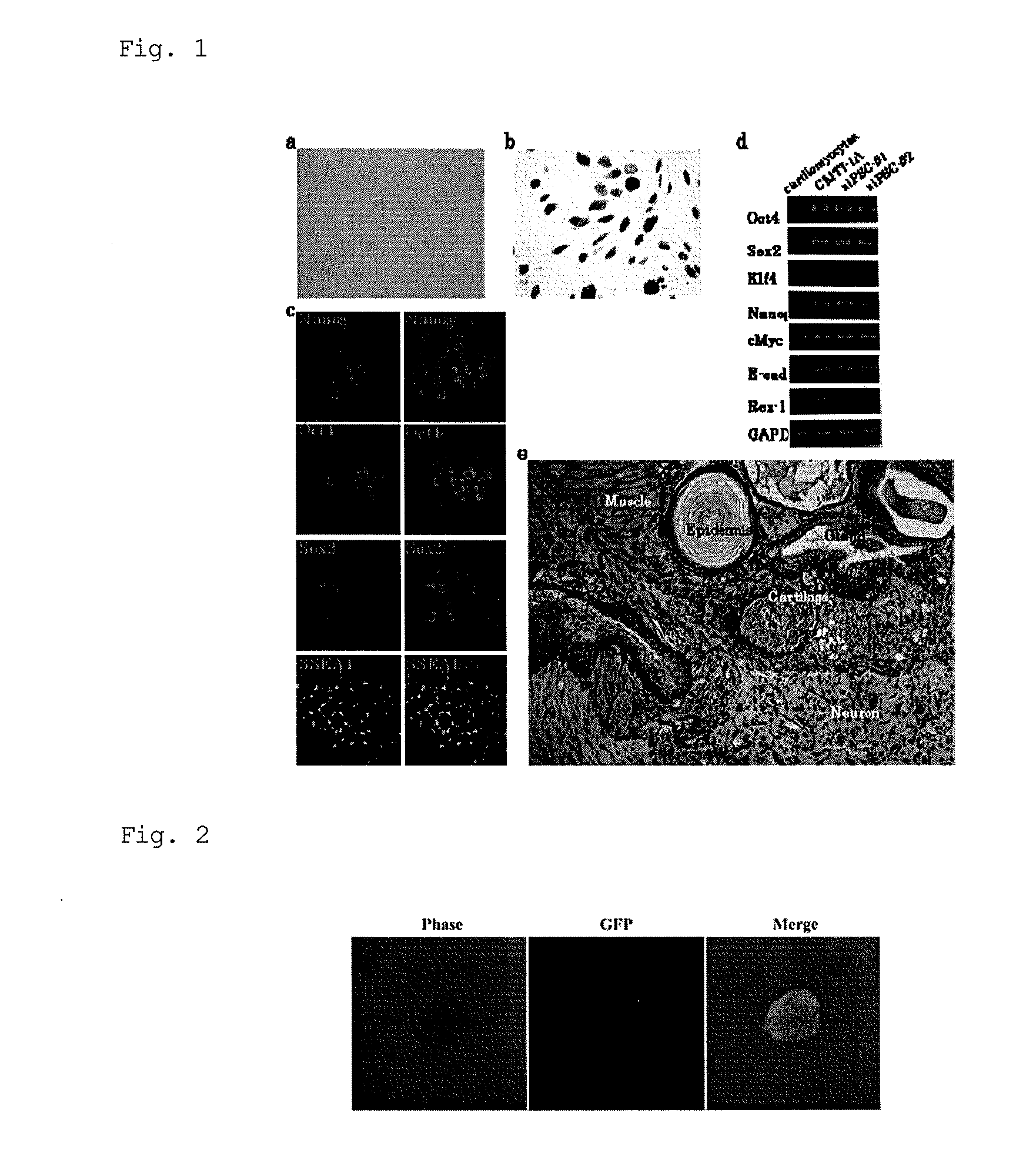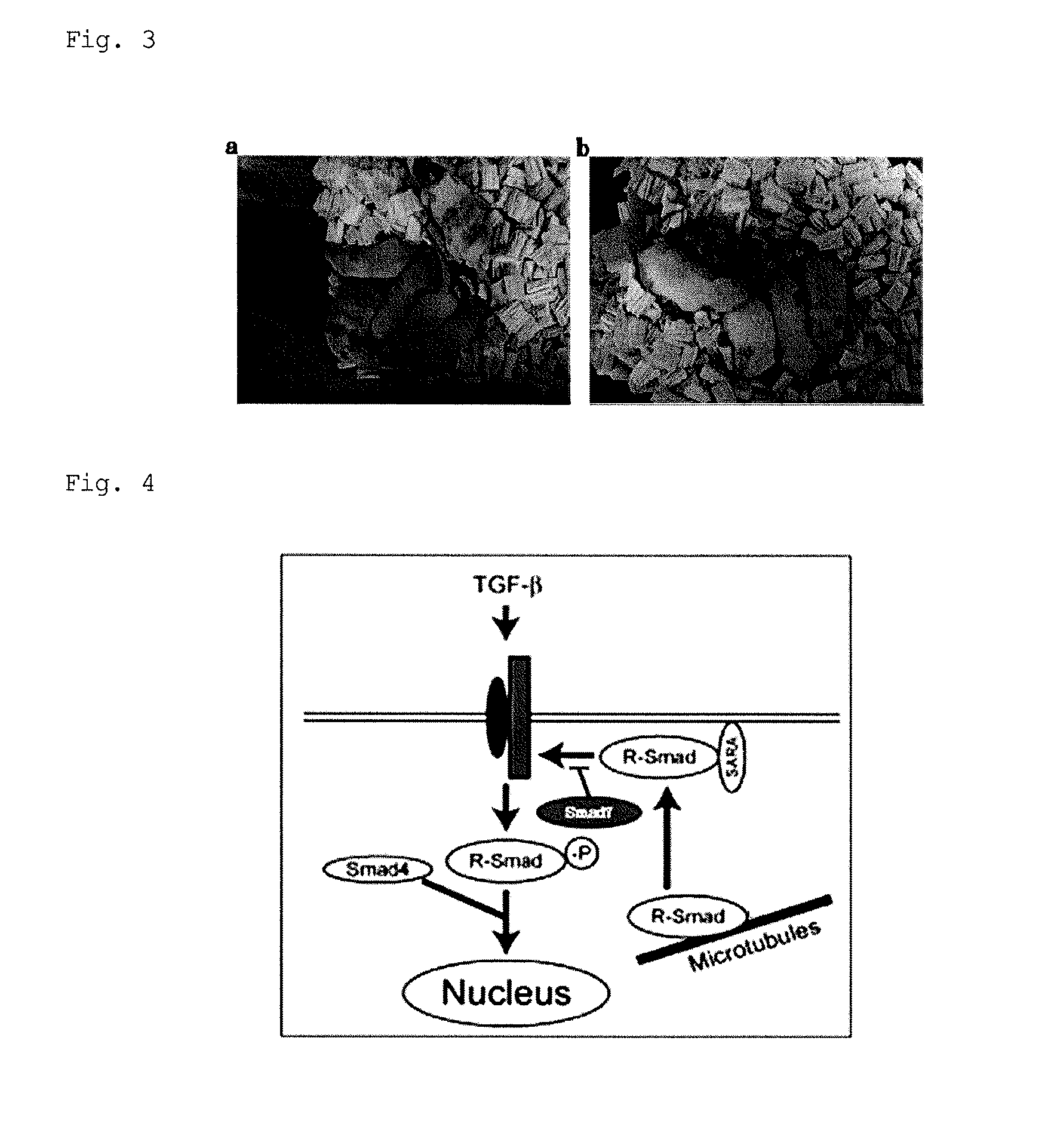iPS CELLS AND METHOD FOR PREPARING THE SAME
a technology of ips cells and ips cells, which is applied in the field of ips cells (induced pluripotent stem cells), can solve the problems of ethical problems, 2. the safety of ips cells produced by conventional methods, and achieve the effect of low risk of cancerous or infected, and advantage in human us
- Summary
- Abstract
- Description
- Claims
- Application Information
AI Technical Summary
Benefits of technology
Problems solved by technology
Method used
Image
Examples
example 1
Reprogramming of Cardiomyocytes Derived from Neonatal Mouse Ventricles
Target and Method
1) Isolation of Cardiomyocytes
[0123]Two-day-old neonatal C57BL / 6 or C57BL / 6-Tg (CAG-EGFP) mouse hearts including ventricles were minced into approximately 2-mm cubes with dissecting scissors by a conventional method. They were treated with 0.2% collagenase (type II; Worthington Biochemical Corp. U.S.; dissolved in PBS) to dissociate cardiomyocytes. The dissociated cardiomyocytes were centrifuged, and incubated for 45 minutes in DMEM containing 10% FBS at 37° C. with 5% CO2. After the incubation, the supernatant was further incubated under the same conditions. This process was repeated four times. Thus, fibroblasts were removed, and the cardiomyocytes were isolated,
2) Reprogramming from Cardiomyocytes
[0124]The cardiomyocytes were seeded at 2×105 cells in a 6-cm dish, and cultured in the above DMEM medium. On day 7 after culture, the cardiomyocytes were switched from 15% FBS medium to mouse ES media...
PUM
| Property | Measurement | Unit |
|---|---|---|
| melting temperature | aaaaa | aaaaa |
| melting temperature | aaaaa | aaaaa |
| melting temperature | aaaaa | aaaaa |
Abstract
Description
Claims
Application Information
 Login to View More
Login to View More - R&D
- Intellectual Property
- Life Sciences
- Materials
- Tech Scout
- Unparalleled Data Quality
- Higher Quality Content
- 60% Fewer Hallucinations
Browse by: Latest US Patents, China's latest patents, Technical Efficacy Thesaurus, Application Domain, Technology Topic, Popular Technical Reports.
© 2025 PatSnap. All rights reserved.Legal|Privacy policy|Modern Slavery Act Transparency Statement|Sitemap|About US| Contact US: help@patsnap.com


